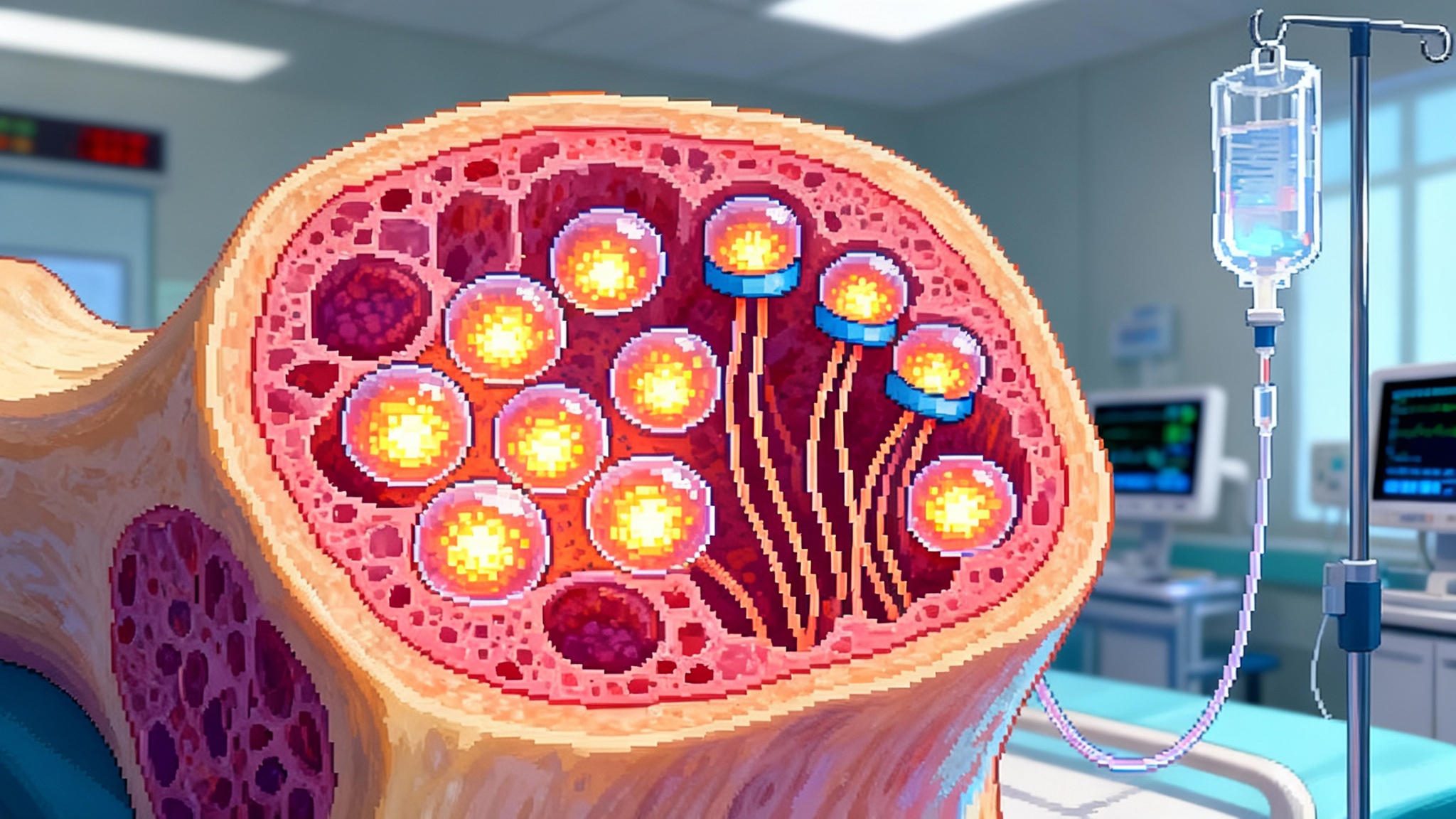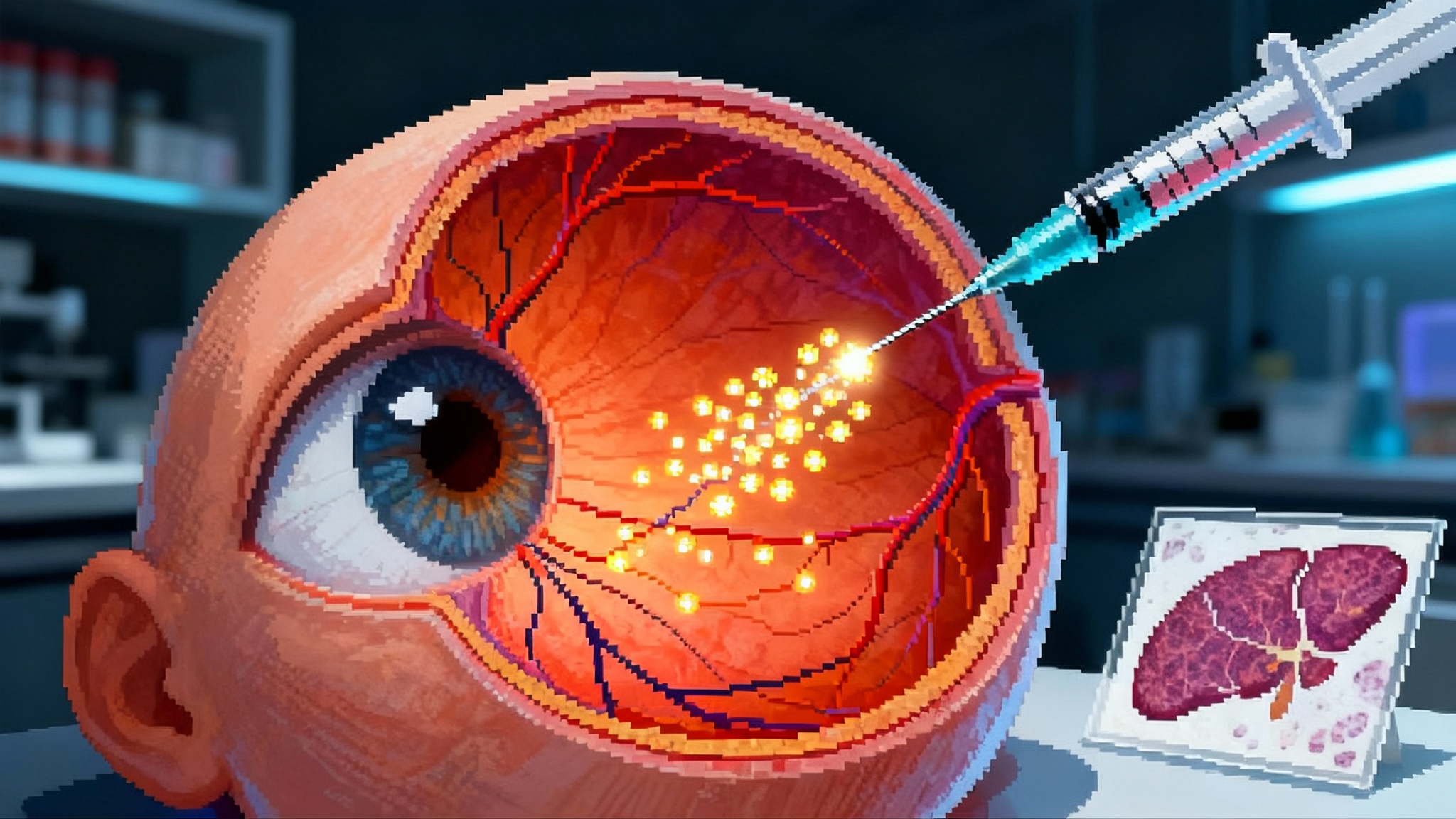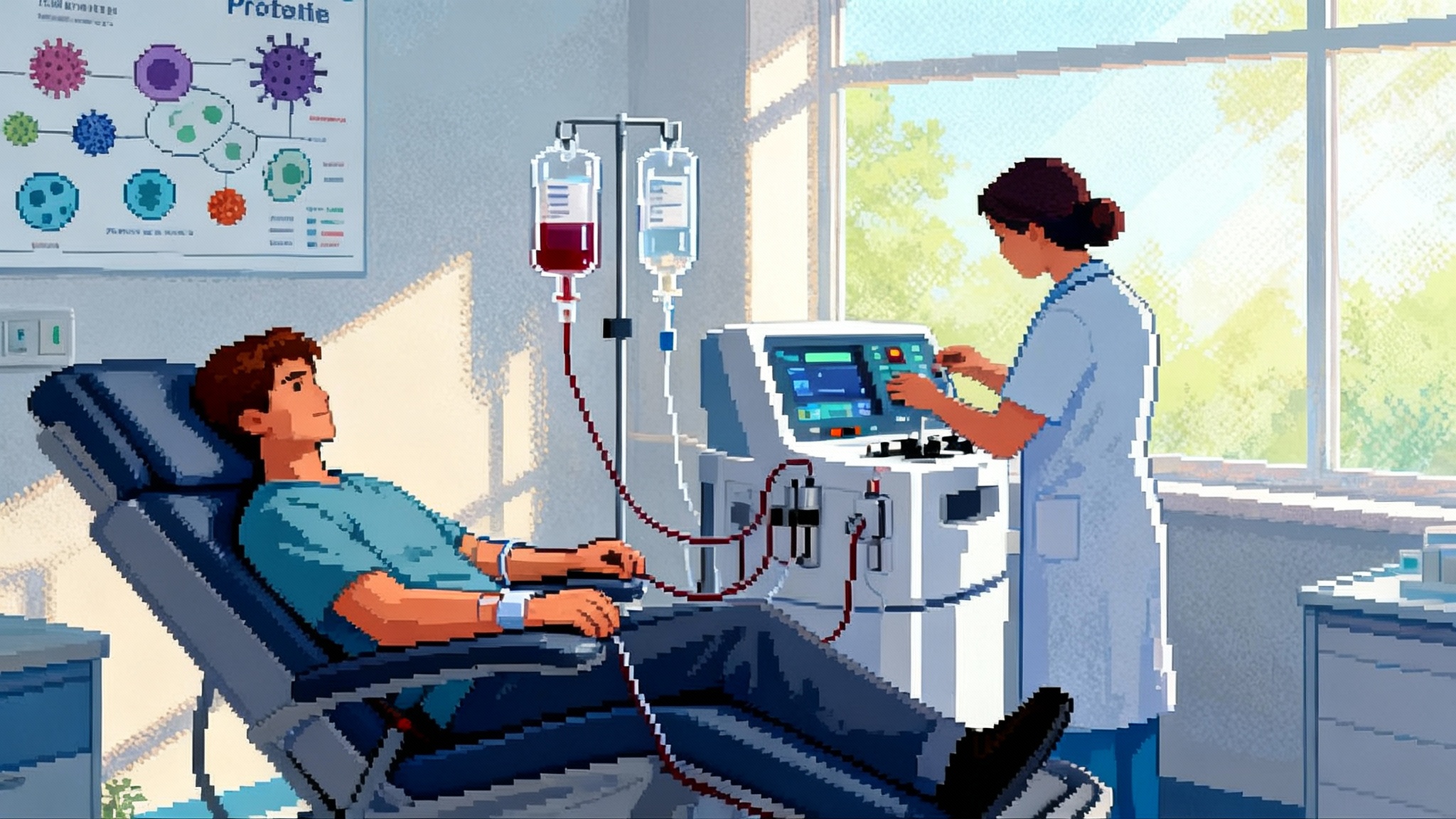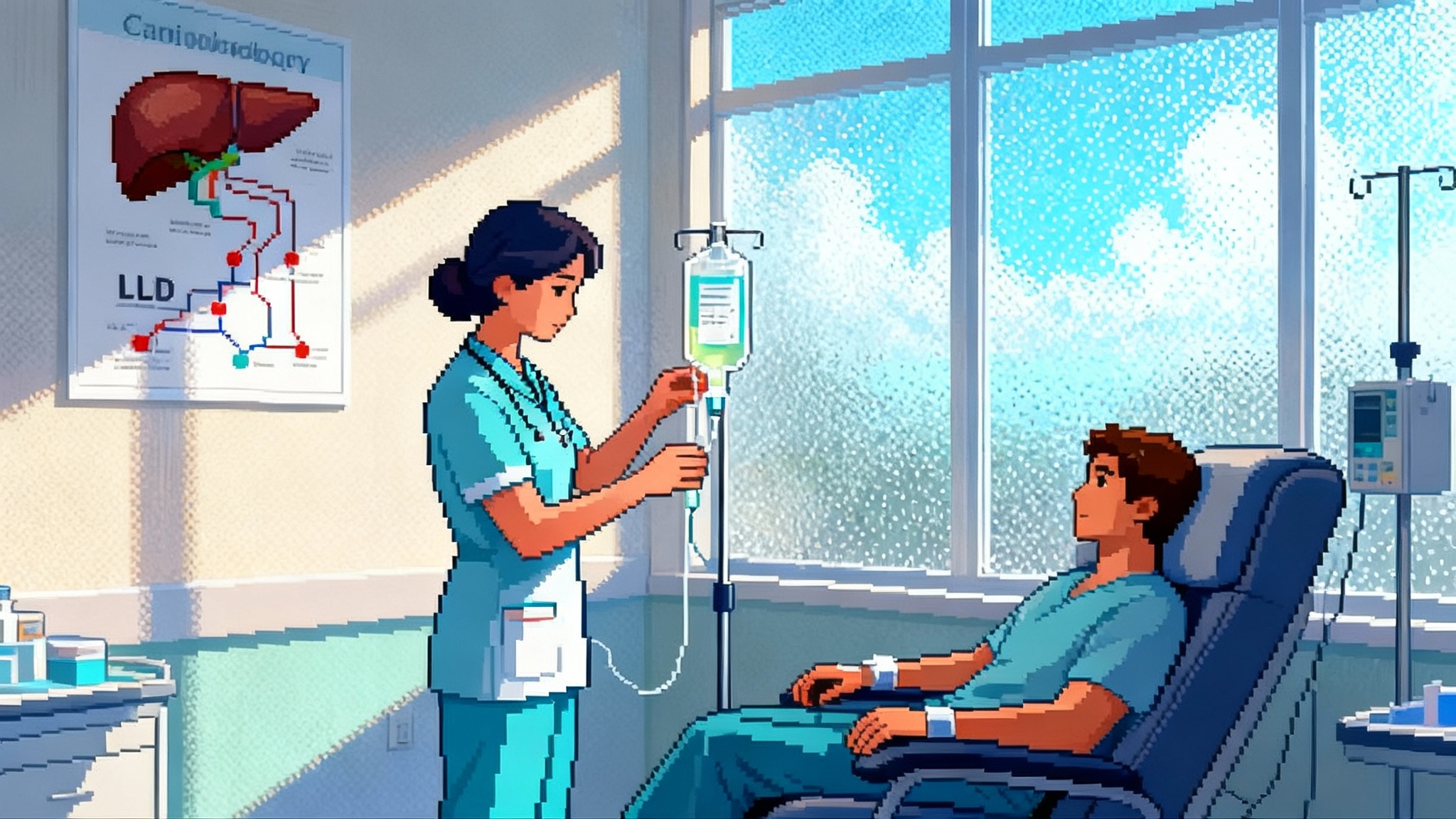Telomere repair goes clinical and the longevity calculus
A February 25, 2025 first in human readout showed lineage specific telomere elongation after an autologous ZSCAN4 cell therapy in patients with telomere biology disorders. Here is what that signal means, the real risks, and the milestones to watch over the next two years.

The clinical moment telomere biology has been waiting for
On February 25, 2025, a small but important clinical signal arrived. Elixirgen reported the first human evidence that telomeres can be elongated in vivo in patients with telomere biology disorders after receiving an autologous CD34+ cell therapy engineered to transiently express ZSCAN4. The initial two patients showed lineage specific telomere lengthening and hematologic improvements, with no treatment related adverse events during follow up. The company summarized early data and regulatory designations in a helpful NEJM Evidence trial update.
If those results hold in a larger set, they mark the first clinical proof that we can deliberately extend telomeres in a patient’s blood stem cell compartment and see functional readouts like higher neutrophil counts. It is not a cure, it is not broad anti aging therapy, and the data are early. Still, the door is now open to move telomere repair from hypothesis and animal models into a regulated human program.
What actually elongated, and for how long
The headline is precise. Telomere lengthening was measured in specific blood cell populations, not in every cell in the body. That is by design. Elixirgen’s approach is ex vivo. Clinicians collect a patient’s CD34+ hematopoietic stem and progenitor cells, expose them outside the body to a controllable vector that induces a pulse of ZSCAN4 expression, then re infuse the cells without myeloablative conditioning.
- In one subject followed for two years, a lymphocyte subpopulation shifted from very short telomeres to an age appropriate median.
- In the second subject, granulocytes showed an emerging subpopulation with longer telomeres by month three.
- Both subjects saw absolute neutrophil count improvements, and neither had treatment related safety signals in the reported windows.
Two patients are not enough to generalize. The kinetics of telomere dynamics vary by lineage, proliferative history, and each patient’s underlying mutations. The signal matters because it demonstrates that a short pulse of a telomere regulatory program can translate into months of measurable change in vivo, which is the minimum bar any telomere repair strategy must clear.
ZSCAN4 in one paragraph
ZSCAN4 is a protein normally seen in very early embryonic cells. It participates in genome maintenance tasks and can drive telomere elongation through a mechanism that does not depend on telomerase. That independence is useful in telomere biology disorders involving telomerase complex mutations, and it gives developers another lever besides TERT to change telomere architecture. The clinical trick is dosing it like a rheostat rather than a light switch. Too little expression, no benefit. Too much, and you risk chromosomal chaos. Elixirgen’s process aims for a narrow, transient window of expression in the right cells, then lets normal hematopoiesis take over.
Benefits vs cancer risk, stated plainly
- What patients could gain now: For individuals with telomere biology disorders who flirt with bone marrow failure and have few options beyond transplant, even a modest and sustained increase in neutrophils, fewer infections, and better quality of life would be meaningful. A therapy that avoids conditioning is especially attractive for this radiation and chemotherapy sensitive population.
- What could go wrong: Telomere extension is a double edged sword. Many cancers rely on telomerase to maintain long telomeres and immortality. Any intervention that supports telomere maintenance could, in theory, rescue pre malignant clones or enable clonal hematopoiesis to expand. ZSCAN4 is not telomerase, and the exposure is brief and ex vivo limited, which helps. Yet the long term malignancy risk will only be understood with years of follow up and larger cohorts, including serial sequencing to watch for expanding clones.
- Safety levers developers can pull: Restrict exposure to a defined cell product, keep expression transient, avoid integrating vectors, and monitor patients with modern minimal residual disease tools. If those controls hold, the risk profile could be closer to other autologous cell manipulations rather than systemic gene activation.
Transient vs durable expression, and why it matters here
Telomere elongation is unusual among genetic targets. You do not need a protein on forever to get a lasting effect. A short pulse that lengthens telomeres in long lived stem cells can have durable downstream consequences, because daughter cells inherit longer telomeres until normal erosion catches up.
- Transient expression pros: Lower oncogenic risk, cleaner off switches, easier repeat dosing if needed. For telomeres, a brief push can be enough.
- Transient expression cons: You may need to repeat treatment when telomeres drift back down, logistics can be heavy for ex vivo programs, and small variations in expression window may lead to inconsistent outcomes across patients.
- Durable expression pros: AAV or integrating systems could maintain expression and simplify logistics, especially in vivo. That could help in tissues with slow stem cell turnover.
- Durable expression cons: Higher risk if an oncogenic program stays on, harder to shut off, and less room for cautious dose finding.
In this setting, the first wins likely come from transient, tightly controlled exposure in ex vivo manipulated cells that return to a familiar niche like bone marrow.
Delivery choices: ex vivo, AAV, or mRNA LNP
- Ex vivo autologous cells: Tight control, defined target cells, immediate stop if something looks wrong, and no need for marrow conditioning in Elixirgen’s protocol. The cost and logistics look like other cell therapies. This feels like the safest beachhead for ZSCAN4 and related tools.
- AAV in vivo: Delivers payloads for the long haul, which could be an advantage for structural correction, not for a pulse based telomere nudge. AAV has payload limits, tissue tropism, and immunogenicity to consider.
- mRNA LNP in vivo: Clean, transient expression without integration, broad tissue reach if retargeting expands beyond liver and spleen. If telomere repair moves into systemic aging or immune rejuvenation, mRNA LNPs will be on the shortlist. The main challenges are repeat dosing tolerance and precise control of which cells pick up the message.
For adjacent frontiers in cell and gene modulation, see our coverage of controlled OSK reprogramming and the senolytics clinical inflection.
From rare bone marrow failure to aging and immunosenescence
The near term expansion path stays in hematology. Myelodysplastic syndromes overlap biologically with telomere dysfunction in a subset of patients, and some inherited marrow failure syndromes could be candidates if risk stays low. Idiopathic pulmonary fibrosis and liver disease in telomere biology disorders are also logical, though delivery becomes the challenge.
For broader aging, the honest opportunity is immune function. T cells and NK cells accumulate replicative stress with age, which blunts vaccine responses and increases infection risk. If developers can show that a transient telomere repair pulse restores proliferative capacity in exhausted but otherwise normal immune cells, and that the effect persists for months without dysplasia, that could translate into better responses to influenza, RSV, and cancer vaccines in older adults. Ex vivo refreshes of autologous T cells for high risk elders, or adjunct telomere repair in CAR T manufacturing to resist exhaustion, are both plausible.
The regulatory path, decoded
Elixirgen’s program carries three useful designations: RMAT, Orphan Drug, and Rare Pediatric Disease. RMAT gives frequent FDA interaction, the possibility of surrogate endpoints, and an accelerated approval route if the totality of data supports a meaningful effect in a serious condition with unmet need. Orphan Drug supports economics and exclusivity in this rare population. Rare Pediatric Disease can lead to a priority review voucher if an eventual approval includes qualified pediatric indications.
What endpoints regulators may accept
- Biological surrogates: Shift of telomere length distribution in defined hematopoietic lineages into an age appropriate range, measured by validated assays. Durable change in the fraction of very short telomeres could be a supportive biomarker. For broader assay context, see our note on the FDA biomarker policy shift.
- Clinical readouts: Sustained increases in absolute neutrophil count, fewer infections, less transfusion, improved performance status, and avoidance of transplant. A reduction in G CSF dependence is a clean and patient relevant signal.
- Safety profile: No new clonal hematopoiesis patterns that look pathologic, no cytogenetic abnormalities linked to the process, and a malignancy rate that fits background risk for this population.
If the trial accumulates a dozen or more patients with consistent biology and clear hematologic benefit, RMAT allows a discussion about an intermediate endpoint to support accelerated approval. Post marketing obligations would likely include long follow up and registry based surveillance for malignancy.
The 12 to 24 month catalysts that matter
- Elixirgen clinical updates: Watch for enrollment progress at Cincinnati Children’s, the first pediatric data for patients 12 and older, and an expanded data cut that shows whether the early signal repeats. Look for a consistent pattern across lineages, not just single subpopulations, and for functional outcomes like infection rates. Any move to a multi center design or a manufacturing scalability update would also be meaningful. See the company’s NEJM Evidence trial update for context.
- Telomir Pharmaceuticals small molecule path: Telomir is targeting an IND by late 2025, with first in human dosing planned in the first half of 2026. The company framed that timing in a June update outlining program cadence, see Telomir-1 IND and plans. Small molecules with telomere activity would open a lower cost, repeatable option if safety and specificity hold up in humans.
- Class validation spillovers: The recent telomerase pathway approvals in hematology reduce the novelty penalty for telomere directed therapeutics and keep regulators focused on the space.
What to watch to know this is real progress
- Reproducibility: The next 5 to 10 Elixirgen patients should show similar lineage specific shifts in telomere distributions and similar hematologic benefits, with acceptable variability.
- Durability: Six to twelve month follow up with sustained clinical benefit matters more than a three month peak. If some subjects drift back, a safe and practical redose protocol would be a strong positive.
- Genomic safety: Serial bone marrow and peripheral blood sequencing should show no worrisome clonal sweeps that correlate with treatment. Cytogenetics should stay quiet.
- Manufacturing and access: A closed system with short ex vivo handling and no marrow conditioning is a strength. The team needs to show they can produce consistent product at scale.
- External replication: A second center reproducing the signal would move this from a compelling single center story to a program with legs.
The longevity calculus, today
The early signal from Elixirgen does not mean anti aging gene therapy is here. It does mean telomere repair has crossed an important threshold, from plausible in vitro and animal models to measurable effects in patients. In the next two years, success will look like a small, well characterized population who maintain safer blood counts, avoid infections, and do not accumulate clonal risks. If that happens, the field can explore careful extensions into immunosenescence and select aging related indications where a short pulse of repair could restore function without feeding malignancy.
Bottom line: Investors and clinicians should favor programs that treat telomeres as dials, not switches. Transient expression, ex vivo control, and clear patient selection are the near term advantages. If the next readouts confirm the signal and small molecule INDs reach patients on schedule, telomere modulation will shift from a niche idea to a practical toolkit.








